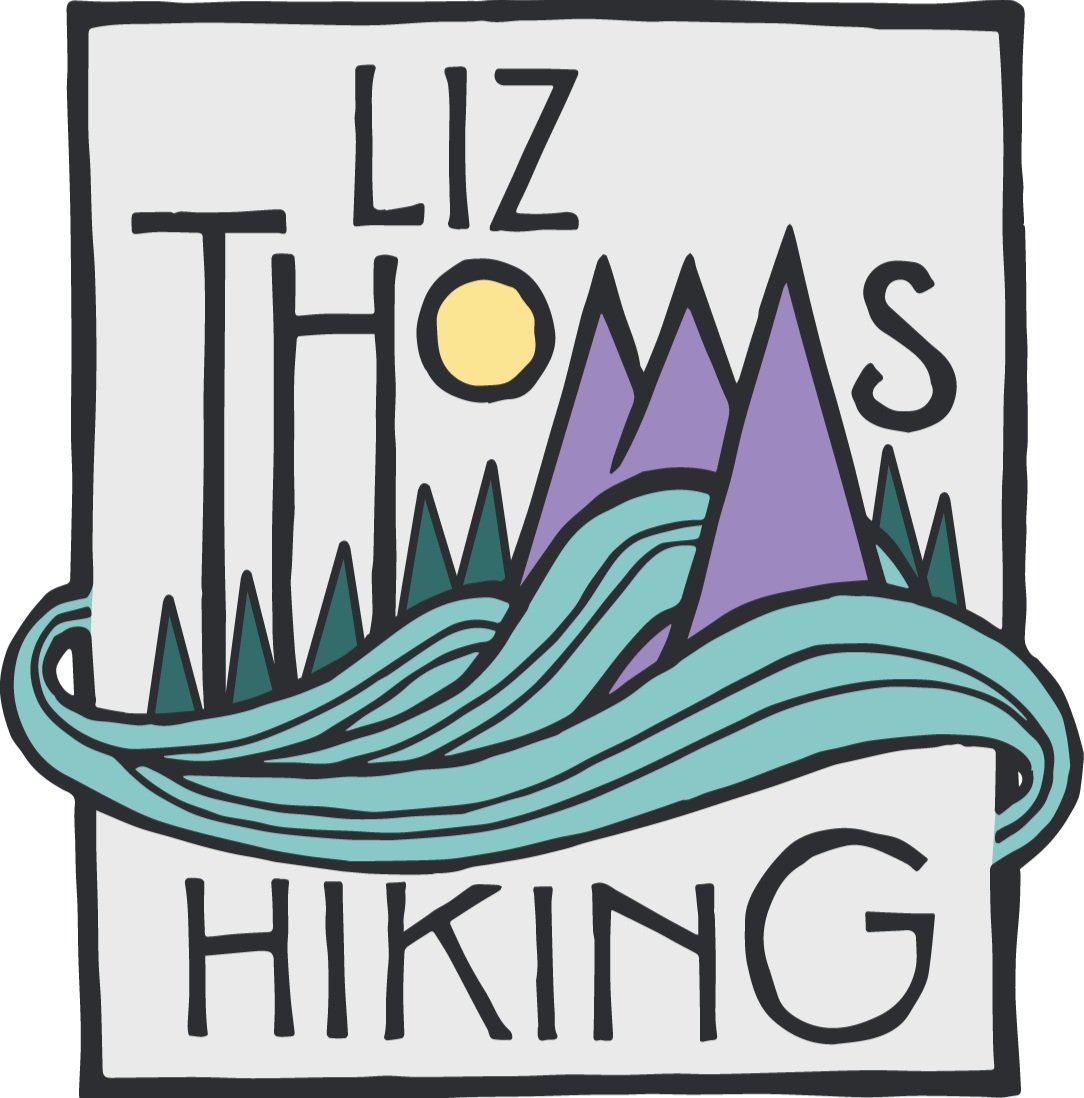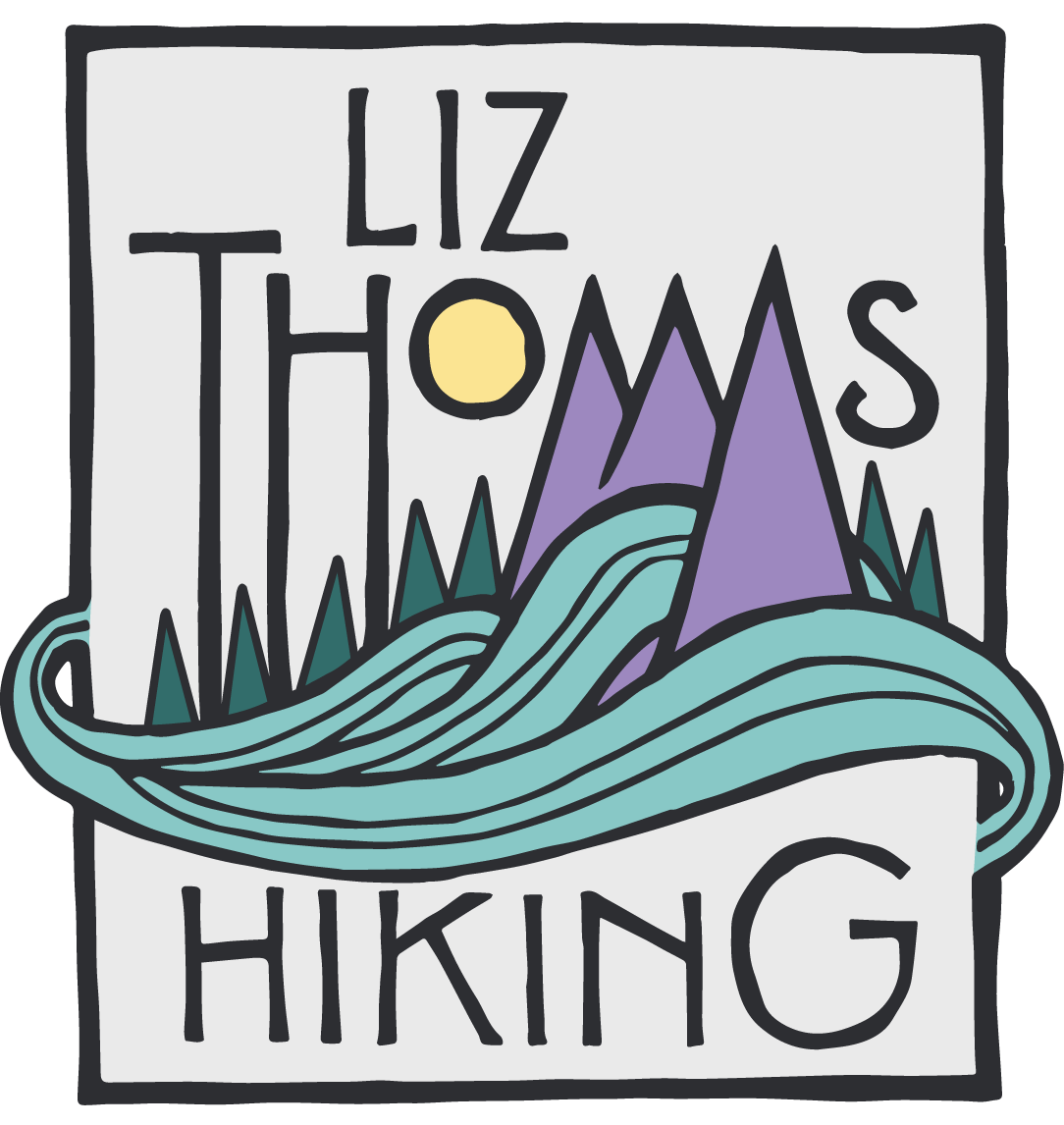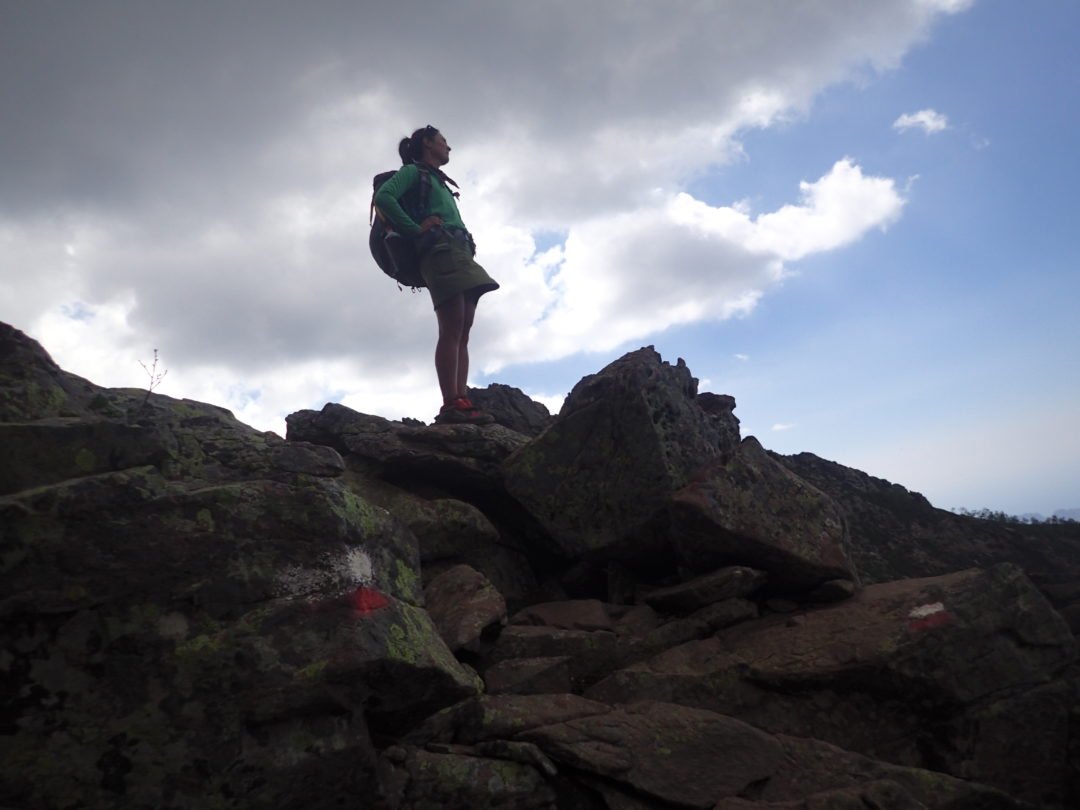GR 20: Initial thoughts from a hike across Europe’s so-called “toughest trail”
Liz Thomas on the GR20
The irony of my trip to Corsica is that for for weeks, I had been looking forward to hiking in Europe because I was getting tired of training in the hot, dry, scrubby, California ecosystem near my home. As soon as our plane landed, the view of the mountains looked laughably exactly the same as the view of the mountains from my little town. Turns out when people say California has a Mediterranean ecosystem, they aren’t lying.
The GR20 may look like California in the lowlands on the first and last day, but then it changes.
Our biggest mistake (and the two of three other Americans we met on the entire island said they made the same mistake) was bringing too much food from the U.S. and from the grocery store before we started. We could easily and surprisingly inexpensively get food every 6 hours or so from the huts. At first, I was dead-set against spending extra money for food (and beer). It was too extravagant, especially for a short hike. But as the walk got harder and harder and started eating away at me, I learned that hiking in Europe is as much about the walk as it is about getting used to the customs. That, and a hiker never turns away an opportunity for food. 🙂
Refuge mid-day snacks on the GR20 range from cake, omelettes, Orangina, little tiny coffees, and cous cous (cake already consumed and not shown).
We never paid for the full meal (30 euros for pasta and lentils?!) but the snacks like omelettes tasted better than what you could get at a restaurant in the States (well, that’s what hiker hunger said anyway). We also liked getting juice, coffee, tea, hot cocoa, and beer from all the huts. Each hut was stocked with “hiking food” as well. We liked packing out with cheese, bread, and salami, which were all pretty reasonably priced. They also had some more expensive but totally worth it regional specialties like Canistrelli cookies and chestnut spreads. They were definitely gourmet fancier items but it felt cool to be eating what the region is famous for while we were hiking (foodies can geek out knowing that the stuff sold at these humble, ramshackle shelters held AOC and AOP designations). Other stuff that was more typical hiker food was more expensive (instant mashed potatoes and canned stuff). Btw, the instant mashed potatoes were unsalted, unflavored, and needed about a pound of cheese added in to make them better.
Aubuerge U Vallone on the GR20 was picturesque place to grab a slice of cake and a beer
We passed a fair amount of bergeries, which are little farmer’s homesteads, which also sell snacks and sometimes let you camp nearby for a fee. We had some of the most amazing cheese ever from these (and one cheese that was kinda a dud). It was cool to meet the cheesemakers, the farmers, the shepherds, the cowboys–just living life in the hills, daydrinking, and hanging out. What a pleasant life to lead!
The GR20, by US standards, was super crowded in the morning around 8 for some reason (maybe when the huts–which operates like a hostel– stops serving breakfast). When we left at 6, we didn’t see a lot of other hikers, and then BAM, it got crowded with folks traveling in groups, as if solo-hiking is a scary thing.
Climbing and descents on rock can be steep on the GR20
The best, best thing ever though was that people don’t really seem to hike in the afternoon on the GR20. We rarely saw people after 3 pm (and since we were there for solstice, it wouldn’t get dark until 9:30 or so). That meant we had the trail to ourselves for 5 hours! It was such a blessing on an otherwise crowded trail.
Europeans seemed really into doing their laundry each evening at the huts. There are clotheslines at each hut just packed with drying synthetic compression shorts. There were a fair share of ultra-runner types who would run from hut to hut with a waist pack and then hang out the rest of the day doing their laundry (??). Every hiut also had solar showers (free, usually). We got in too late to laundry and weren’t super stoked on the cold showers at night, so definitely felt like grubby Americans. Several of the refuges near roads did have hot showers, so I got in 3 showers on the trip (including one at a hotel!). Not bad for a thru-hike of that size!
Despite being a low snow year, there were still patches in early-mid June.
I hadn’t been counting on the trail being hot and sunny (I guess I think Europe, I think Scotland cold), but it was California-style sun exposure when not shaded by the steepness of the mountains and angle of the sun. Water was only once an issue (we climbed a side peak and didn’t bring water and then when we got back to our packs and were displeased with what was left.) I was fine, but Mr. G was not pleased until I found some snowmelt about 15 min later.
Chains on the GR20 help hikers navigate steep terrain or wet/icy slab
In general, trail quality (by US standards) was all over the place. We really are lucky ducks having trails as nicely graded and well-defined as we have here. There was a lot of scrambling on slabby rock and well-featured small faces (as opposed to boulders, but there were a few of those, too). The chains that helped you ascend weren’t always necessary and weren’t always in the most helpful spots, but were still a nice touch. The trail is generally well blazed, but sometimes braids into many different paths between the blazes. The result was, for a marked, blazed trail, there was more route-finding than you would expect. It was generally pretty obvious, but I could tell that Mr. G, who hasn’t had the same experience looking for blazes and trail markers as I have, struggled and would get frustrated when he was in the lead.
Loose scree made for slow moving on the GR20
Much of what was on dirt felt like loose, steep scree best suited for dirt mountaineering (in fact, the ultra-runner dudes were dirt-boot-skiing down it, poles and all). Mr. G in particular hated these descents. A wee bit of trail was PCT-esque beautiful trail—even if it was way, way, steeper than the PCT. Even though the GR20 was definitely constructed with rockwork and at times switchbacks, in many ways, it felt as if a cross-country route through the Sierras was blazed and 30,000 people hiked it a year (enough to get very distinct paths): a mix of scrambling and some nice trails. Plus, steep scree slopes.
Tents for rent outside the Petra Piana refuge on the GR20
Ultimately, the huts were the biggest difference between the American hiking and the GR20. We liked the food at the huts, but I resented that it was illegal to camp anywhere but near the huts (or the bergeries—which are owned by the farmers). A younger, poorer version of myself would’ve hated having to pay to camp each night, but now that I’m better off, I don’t feel bad about the money going back to the park system since we never paid an entrance fee or permit fee.
We ran into surprisingly few people during our afternoon descent of Monte Cinto, Corsica’s highest peak. Where did they all go?
But I didn’t grumble about the crowds at the huts. In my mind, the GR20’s hut systems and regulations have traded convenience and the security of never having to camp alone for the freedom and privacy of camping in the wild. My understanding is that the GR20’s huts are considered primitive and far between by European standards—this was really roughing it for many of the hikers there. But my American standards, it felt confined, making the world seem much smaller and more populated than it may have been. I get that the huts consolidate use on a highly trafficked trail. But I lament the idea that open space should be so limited. I worry that America, too, may turn to such systems, too.
The GR20 scenery was stunning: everyday had waterfalls, snowy mountains, red rock, steep cliffs…
As we hiked late into the day, it was hard to find a campsite near the huts (though because our backpacking tent was so much smaller than most other people who brought their own tents, we found we could sneak into some primo spots that others would’ve overlooked).
If I were to do it all again, I’d check the conditions and ask people headed in the other direction more about what they had experienced.
But my biggest regret wasn’t eating more things, especially bread and cheese.












